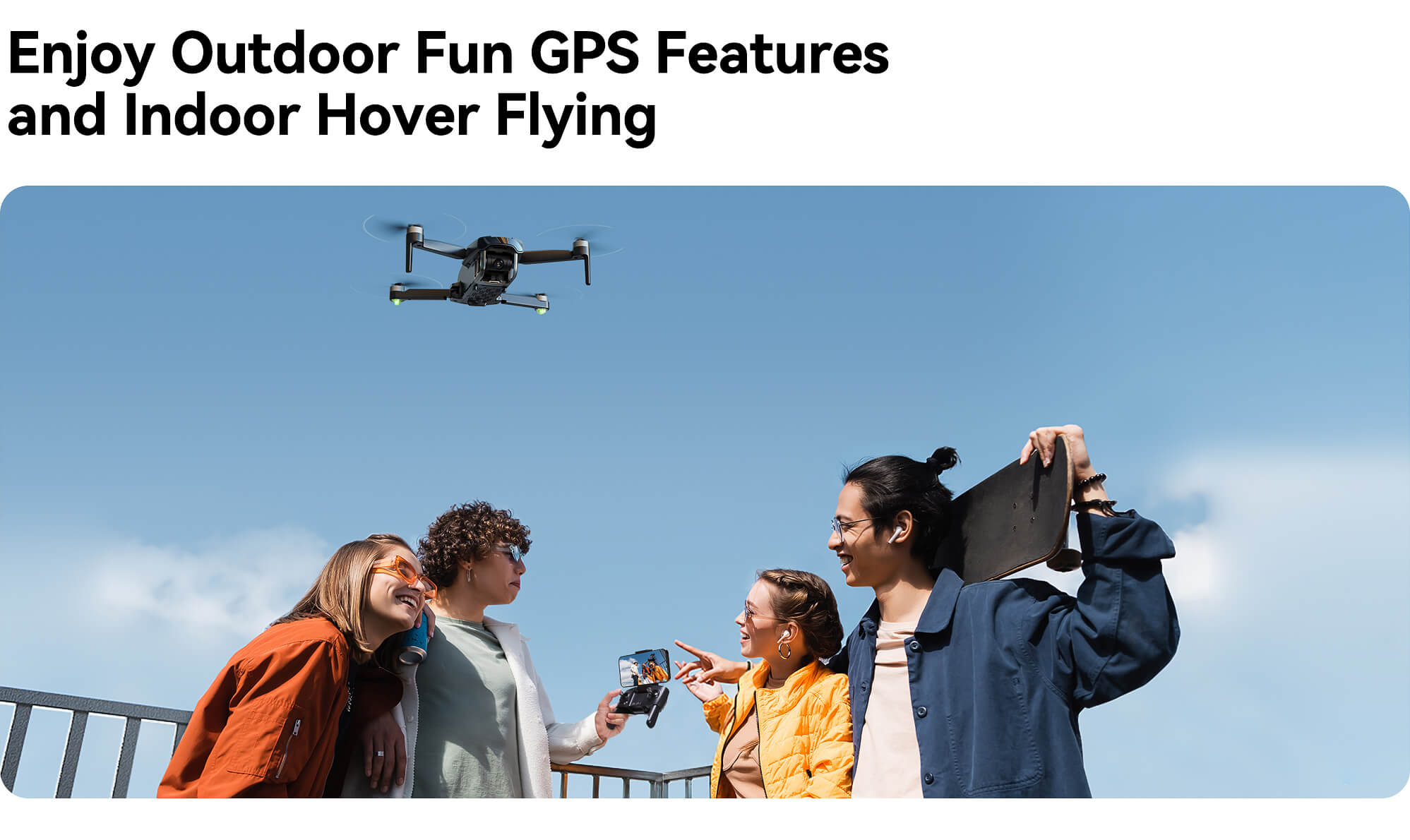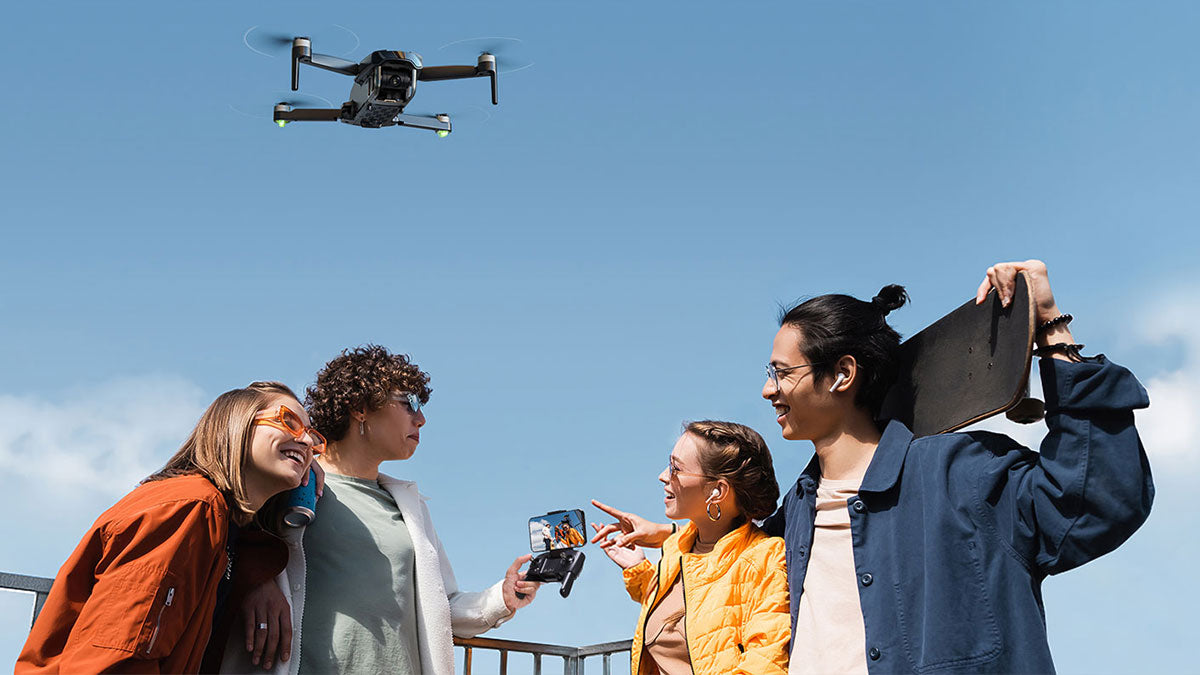In the fast-growing realm of unmanned aerial vehicles (UAVs) or drones, it is of utmost importance to be a proficient and mistake-free pilot in order to prioritize safety and adhere to regulations. Regardless of whether you are a novice or a seasoned drone enthusiast, it is imperative to be mindful of the typical errors frequently committed by new Ruko Entry Level drone pilots. This all-inclusive guide intends to provide you with the necessary information to steer clear of these mistakes and guarantee a secure, effective, and delightful drone flying adventure.

Lack of Familiarity with Airspace Rules and Regulations
Failing to grasp the airspace rules and regulations is a major error commonly committed by novice drone pilots. The Federal Aviation Administration (FAA) enforces stringent guidelines that must be adhered to by drone operators. These regulations may differ depending on the flying location, underscoring the importance of thoroughly investigating and comprehending the airspace classification in your vicinity. Flying your drone in restricted zones can lead to fines or confiscation, which can be easily avoided by being well-informed.
Inadequate Equipment Preparation
It is often overlooked by numerous novice drone pilots just how crucial it is to possess the appropriate equipment for their flights. Insufficient gear can result in the squandering of time, money, and effort. It is advisable to commence with indispensable equipment like spare batteries, high-definition monitors or goggles, an SD card reader, and an FPV controller (if applicable). Gradually adding to your toolkit can enhance your flying experience and broaden your capabilities.
Flying Too Close to People or Structures
To ensure compliance and safety, it is essential for drone pilots to adhere to the global legal requirement of maintaining a safe distance from individuals or structures during flights. In order to prevent any potential harm to people or property, a minimum distance of at least 30 meters must be maintained. Familiarizing oneself with the specific regulations for different types of airspace is crucial in order to ensure compliance and safety.
Operating in Hazardous Weather Conditions
Flying in hazardous weather conditions is another common mistake made by new drone pilots. Checking weather conditions before each flight and following the FAA's guideline to fly in safe and visible conditions is crucial to prevent the drone from losing control and crashing due to unpredictable winds or gusts. It is important to strictly avoid flying in rain, snow, or extreme weather conditions.
Neglecting Safety Protocols in Public Areas
It is important to exercise increased caution when operating a drone in public areas, as those nearby may not have knowledge about drones. To guarantee the safety of all individuals present, it is crucial to comply with the safety guidelines set by the FAA while flying in public spaces.
Neglecting to Verify the Absence of No-Fly Zones
NFZs, also known as No-Fly Zones, are specific regions where drone flights are not allowed due to concerns related to safety and security. The Federal Aviation Administration (FAA) is responsible for establishing certain NFZs across the United States, while local authorities can enforce additional limitations. Prior to launching a drone, it is essential to verify the presence of any NFZs in your vicinity and acquaint yourself with the applicable guidelines and protocols.
Flying Beyond Visual Line of Sight (BVLOS)
Operating unmanned aircraft systems (UAS) beyond the operator's visual line of sight is both potentially hazardous and possibly against the law, depending on the jurisdiction. The FAA typically forbids flying drones beyond visual line of sight. Special authorizations may be required for BVLOS flights, depending on the airspace.
Unauthorized Flight in Prohibited Areas or Airports
Flying in prohibited areas or near airports without proper authorization is illegal, regardless of how harmless you perceive your drone activities. The FAA provides a list of places where drone flights are entirely banned, including specific rules for flying near airports and military facilities. Thoroughly research any local restrictions before taking off.

Taking Off in Electromagnetically Interfered Areas
Drone pilots need to be aware of their surroundings and potential electromagnetic interference (EMI). Common sources of EMI include cell towers, power lines, and other electronic devices. High levels of interference can hinder communication between the pilot and the drone, compromising control.
Neglecting Pre-flight and In-flight Airspace Checks
Checking for restrictive airspace is vital to ensure compliant drone flights. Before takeoff, consult local airports and aviation authorities to verify any special rules applicable to your location. Most commercial drones have altitude restrictions, and any flight exceeding 400 feet may require an exemption.
Attempting to Fly the Drone Beyond Its Technical Limits
Knowing the capabilities and limitations of your drone is crucial, especially for new drone pilots. Ignoring this aspect can lead to safety issues or unnecessary incidents. It is essential to read the user manual thoroughly and seek advice from experienced drone pilots to ensure proper operation.
Flying Near Bird or Animal Populations
Environmental awareness is crucial during drone operations, as the presence of birds or other animals can pose threats to your drone. The noise and movement of the drone may disturb wildlife, especially endangered species. It is best to maintain a safe distance or entirely avoid flying near sensitive animal habitats.
Inadequate Pre-flight Inspection of Drones
One of the most important safety measures for new drone pilots is to thoroughly examine their drone before taking off. This examination should involve verifying that all parts are securely attached, all batteries are completely charged, and there are no visible indications of any harm.
Conclusion
Becoming a skilled and responsible Ruko Entry Level drone pilot involves continuous learning, adherence to regulations, and a commitment to safety. By avoiding the common mistakes outlined in this guide, you can maximize your flying experience while safeguarding yourself, others, and the environment. Stay informed, research all laws and regulations, exercise vigilance throughout your flights, and acquire the necessary equipment for each task or scenario. With these principles in mind, you can set yourself on the path to becoming an experienced and successful drone pilot.









